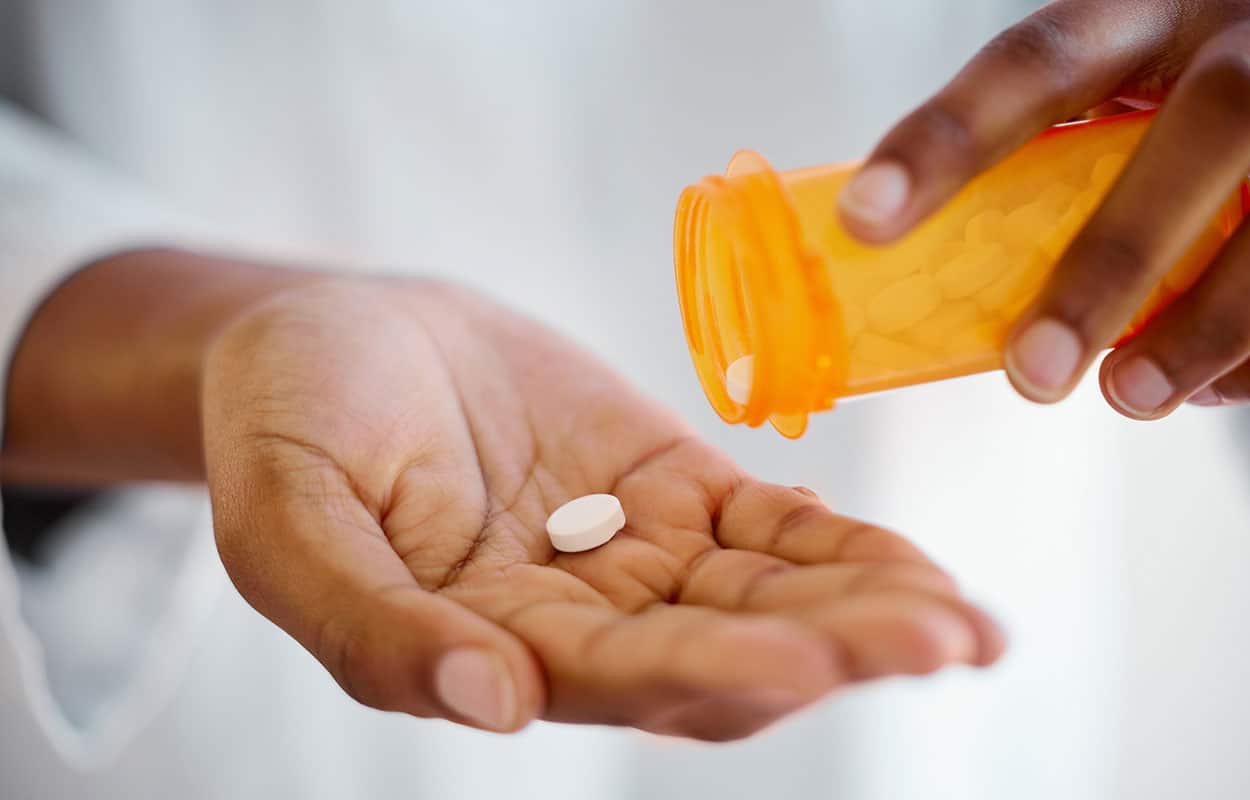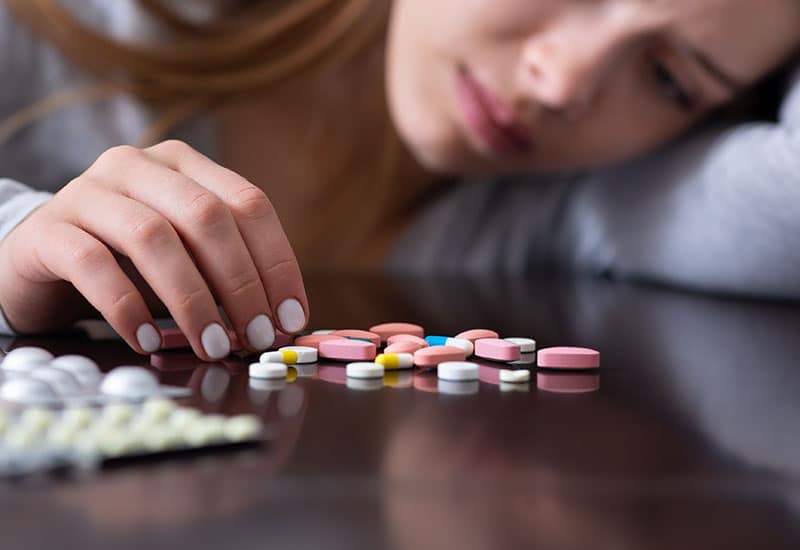What is the 20 mg Ritalin Equivalent to Adderall?
Medically Reviewed By:
Written By:
Updated On: September 15, 2025
Last Medically Reviewed on: September 15, 2025

Table of Contents
Key Points
- Adderall is considered to be twice as potent as Ritalin, so 20 milligrams of Ritalin would be equivalent to 10 milligrams of Adderall.
- Both Ritalin and Adderall are central nervous system depressants and treat symptoms of attention deficit hyperactivity disorder, but they are different drugs and are prescribed in different dosages.
- Ritalin and Adderall are both available in immediate-release and extended-release formulations, so it’s important to note the type of tablet when comparing dosages.
- Both Adderall and Ritalin have been classified as Schedule II controlled substances by the DEA due to their high potential for abuse and addiction.
- Side effects of stimulant medications such as Adderall and Ritalin include loss of appetite, high blood pressure, irritability, and insomnia.
- Possible drug interactions associated with Ritalin and/or Adderall include certain antidepressant drugs, antihistamines, and seizure medications, among others.
- Never mix Ritalin and Adderall, since these are very similar medications and doing so could result in increased side effects and risks, including a fatal overdose.
- Signs of stimulant use disorder include extreme cravings for stimulants, using stimulants in dangerous situations, and needing more and more of them to achieve the same effects (i.e., tolerance).
- Signs of a stimulant overdose can include dilated pupils, confusion, diarrhea, vomiting, hallucinations, and seizures, for example.
- Certain risk factors may make an individual more vulnerable to stimulant use disorder, including stress, gender, mental health conditions, and poor academic performance.
How is 20 mg Ritalin Equivalent to Adderall Doses?
Adderall is considered to be twice as strong as Ritalin, milligram to milligram. [1] Thus, 20 mg of Ritalin may be equivalent to 10 mg of Adderall. When comparing these two stimulant medications, it could be important to ensure you’re comparing the same formulations of each drug. Both Ritalin and Adderall are available in immediate-release and extended-release tablets. Never start, stop, or change a medication without first talking to your doctor, as this could result in adverse effects, including a life-threatening overdose.
What Is Ritalin?
Ritalin is a brand name for the generic drug methylphenidate. It’s a member of a class of drugs known as central nervous system stimulants. The central nervous system is the body’s primary control center, the brain and the spine.
Ritalin and other stimulant medications like it are commonly prescribed to treat symptoms of attention deficit hyperactivity disorder, such as impulsivity, inattention, and hyperactivity. However, they pose a significant risk for abuse and addiction, especially if not used as directed. The U.S. Drug Enforcement Administration (DEA) has classified Ritalin as a Schedule II controlled substance. [2] Ritalin is available in both immediate-release and extended-release formulations.
What Is Adderall?
Adderall is another type of central nervous system stimulant used to treat ADHD. It’s a brand name for the generic drug amphetamine and dextroamphetamine. Like Ritalin, Adderall is considered a controlled substance and is linked to a high risk for substance abuse and addiction. [3] Adderall is also available in short-acting (Adderall IR) and long-acting variations (Adderall XR).
Side Effects of Ritalin and Adderall
Since these prescription stimulants are so similar, they often cause many of the same side effects, including common side effects like: [4]
- Dry mouth
- Headache
- Dizziness
- Nausea
- Stomach pain
- Vomiting
- Indigestion
- Excessive sweating
- Anxiety
- Irritability
- Mood swings
- Increased heart rate
- Loss of appetite/weight loss
- Trouble sleeping
- High blood pressure
If any of these side effects become serious or last more than a few days, contact your healthcare provider as soon as possible.
Ritalin and Adderall Drug Interactions
The ADHD medications Ritalin and Adderall also share many of the same drug interactions. Before taking these medications, be sure to tell your doctor about any other medications you’re taking, especially the following types of drugs: [5]
- Antidepressant medications, particularly selective serotonin reuptake inhibitors, tricyclic antidepressants, and serotonin and norepinephrine reuptake inhibitors
- Monoamine oxidase inhibitors (MAOIs)
- Vasopressors (medications that increase blood pressure)
- Anti-psychotic medications
- Antihistamines
Give your doctor a complete list of substances you’re taking, including prescription medications, over-the-counter drugs, recreational substances, and even vitamins and supplements. Any of these could be associated with a dangerous drug interaction.
Signs of Stimulant Use Disorder
Whether taking Ritalin or Adderall, you or your child may be at risk of developing a serious condition known as stimulant use disorder (formerly stimulant addiction). It’s important to know the signs of this disorder so you know when to seek medical advice or professional counseling: [6]
- Experiencing intense cravings for Ritalin or Adderall
- Spending excessive amounts of time using, acquiring, or recovering from stimulant use
- Putting yourself or others at risk while using Ritalin or Adderall
- Dropping out of other activities to use stimulants
- Continuing to use stimulants even though use is causing problems in your life or worsening a physical or mental health condition
- Trouble limiting your use of stimulants or using them for longer than planned
- Needing more and more of the drug to achieve the same effect (also known as developing tolerance)
- Missing deadlines or failing to fulfill responsibilities due to stimulant use
- Experiencing withdrawal symptoms when you stop taking Adderall or Ritalin for a period of time
If you or your child has two or more of these symptoms, you may need professional treatment for stimulant use disorder. Don’t wait until symptoms progress; severe disorders may be more difficult to treat. The longer you wait, the higher your risk for adverse effects, including a life-threatening overdose.
Signs of Stimulant Overdose
If you or your child is taking Adderall or Ritalin for attention-deficit hyperactivity disorder, it’s crucial to know that an overdose is possible. The risk is significantly higher for people who misuse these drugs or take them without a prescription. Signs and symptoms of an overdose on Ritalin or Adderall may include: [7]
- Dilated pupils
- Diarrhea
- Vomiting
- Muscle twitching
- Muscle pain or weakness
- Tremor or shakiness
- Nausea
- Pounding in the ears or neck
- Confusion or disorientation
- Hallucinations
- Rapid breathing
- Profuse sweating
- Faintness
- Lightheadedness
- Seizures
Any signs of stimulant overdose should be treated as a life-threatening emergency. Call 911 or go to the nearest emergency room. You can also call the poison control hotline at 1-800-222-1222.
Risk Factors for Stimulant Use Disorder
Not everyone who takes stimulants like Adderall and Ritalin will develop a stimulant use disorder. The risk may be low for individuals who take these prescription medications as directed by a healthcare professional. Certain factors may increase the risk of addiction, including: [8]
- Gender
- Racial background
- History of substance use, including alcohol
- Poor academic performance
- Other risky behaviors, like drinking and driving
- Mental health conditions like depression and anxiety
- Impulsivity and restlessness
- Chronic stress
If you or your child has any of these risk factors, it could be important to tell your doctor prior to accepting a prescription for Adderall, Ritalin, or other stimulant medications. Non-medication treatments are also available for the treatment of ADHD, including behavioral training and mental health therapies.
Stimulant Addiction Treatment Options
Unfortunately, stimulant use disorder is not uncommon, but effective treatment options are available. A compassionate and knowledgeable substance use and rehabilitation counselor can guide you through your options, including evidence-based behavioral therapies, medical detox, and medication-assisted treatment when appropriate. Thanks to these treatments, addiction to stimulants is not a life sentence; recovery is possible.
Frequently Asked Questions About Ritalin and Adderall
Is 20 milligrams of Ritalin a lot?
No. This is the average adult dosage for treating ADHD. The maximum recommended dose is 60 milligrams per day. [9] Still, you should only take the amount prescribed to you by a doctor. The way the medication affects you can vary based on individual factors, such as age, metabolism, and overall health.
What do Ritalin and Adderall treat?
Ritalin and Adderall are both commonly prescribed to treat attention-deficit hyperactivity disorder (ADHD) in children and adults. Less commonly, these medications might also be prescribed to treat narcolepsy. A doctor will prescribe one of these medications, not both. Never take Ritalin and Adderall together, as this can increase the risk of adverse effects such as an overdose.
Does Ritalin give you energy like Adderall does?
Medications may affect individuals differently. However, both Ritalin and Adderall are central nervous system stimulants, meaning they both have the potential to make you feel more energized and focused.
How long does it take for ADHD medications to work?
Stimulant medications, such as Ritalin and Adderall, may begin to take effect within 20 to 30 minutes. [10] Other non-stimulant medications may take weeks to reach their full effectiveness.
There is a Better Way to Live. It's Time to Get the Help You Deserve.
Take the first step in getting your life back. Speak with our admissions team today.Sources
[1] Stimulant equivalency table: Doses & conversions. studylib.net. (n.d.). https://studylib.net/doc/8261622/stimulant-equivalency-table
[2] [3] Drug scheduling. DEA. (n.d.-d). https://www.dea.gov/drug-information/drug-scheduling
[4] Ritalin vs. Adderall: 8 differences between these ADHD stimulant meds – goodrx. (n.d.-an). https://www.goodrx.com/conditions/adhd/ritalin-vs-adderall
[5] 11 adderall interactions, including medication, caffeine, and more – goodrx. (n.d.-b). https://www.goodrx.com/amphetamine-salt-combo/interactions
[6] What is stimulant use disorder? signs, symptoms, & treatment – goodrx. (n.d.-as). https://www.goodrx.com/conditions/stimulant-use-disorder
[7] [9] Ritalin: Uses, dosage, side effects & warnings. Drugs.com. (n.d.-ao). https://www.drugs.com/ritalin.html#side-effects
[8] Weyandt, L. L., Oster, D. R., Marraccini, M. E., Gudmundsdottir, B. G., Munro, B. A., Rathkey, E. S., & McCallum, A. (2016, October). Prescription stimulant medication misuse: Where are we and where do we go from here?. Experimental and clinical psychopharmacology. https://pmc.ncbi.nlm.nih.gov/articles/PMC5113141/#S3
[10] Methylphenidate efficacy: Immediate versus extended release at short term in Mexican children with ADHD assessed by conners scale and EEG – Durand-Rivera – 2015 – Neurology Research International – Wiley Online Library. (n.d.-ab). https://onlinelibrary.wiley.com/doi/10.1155/2015/207801



